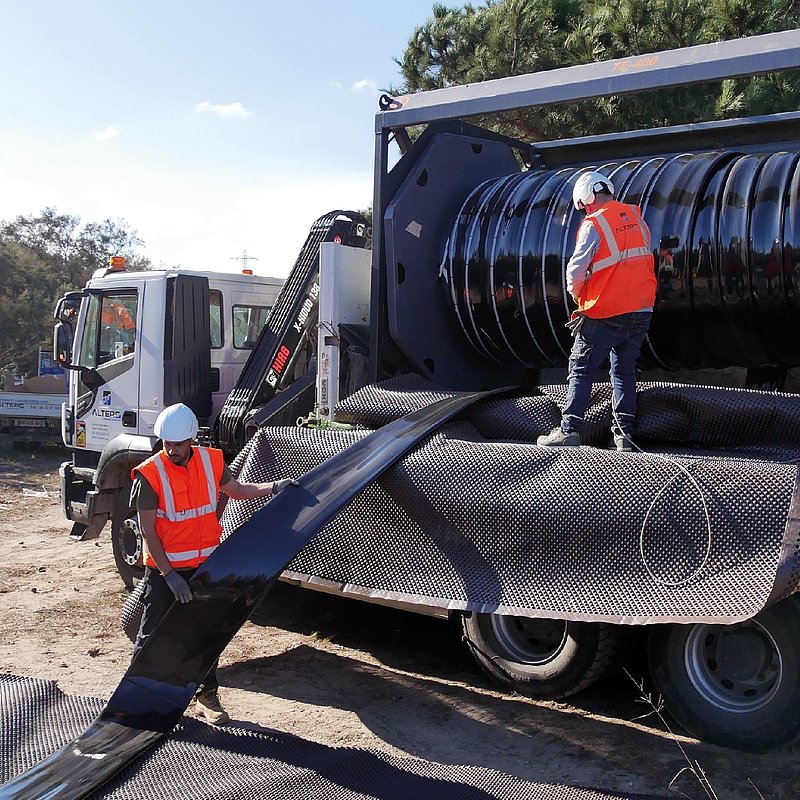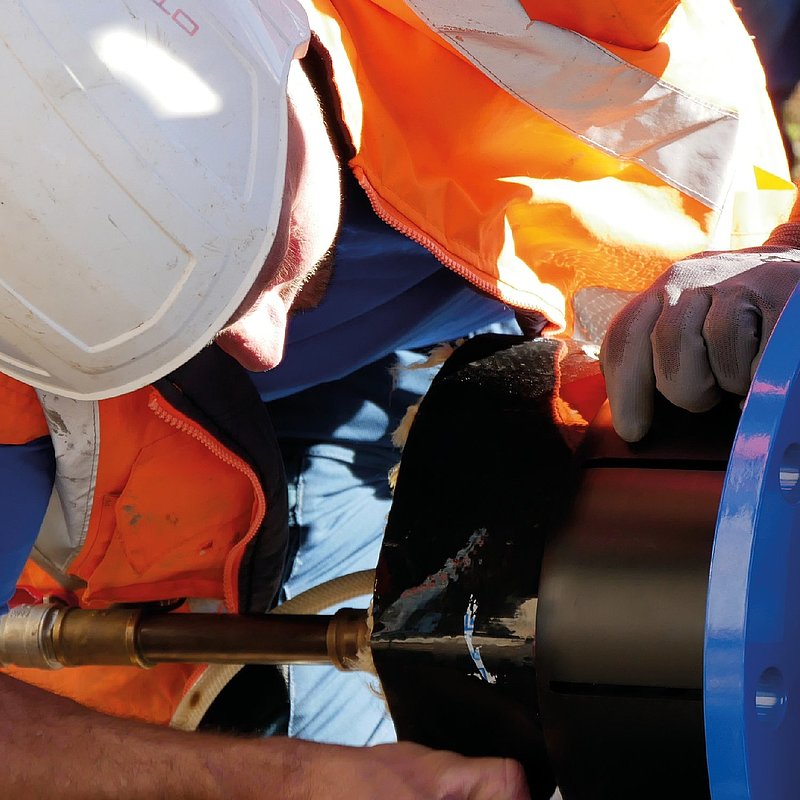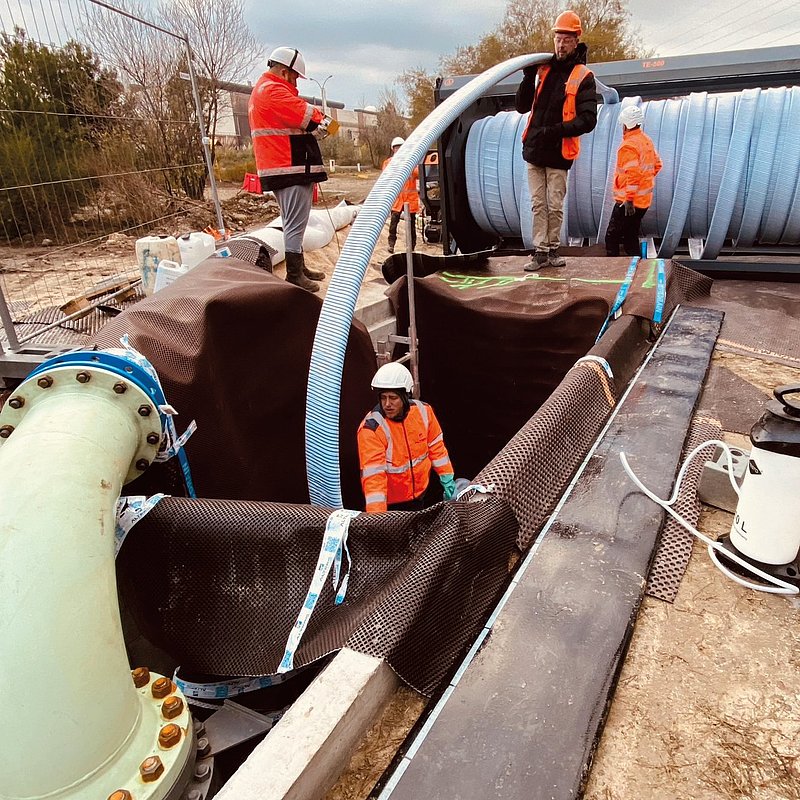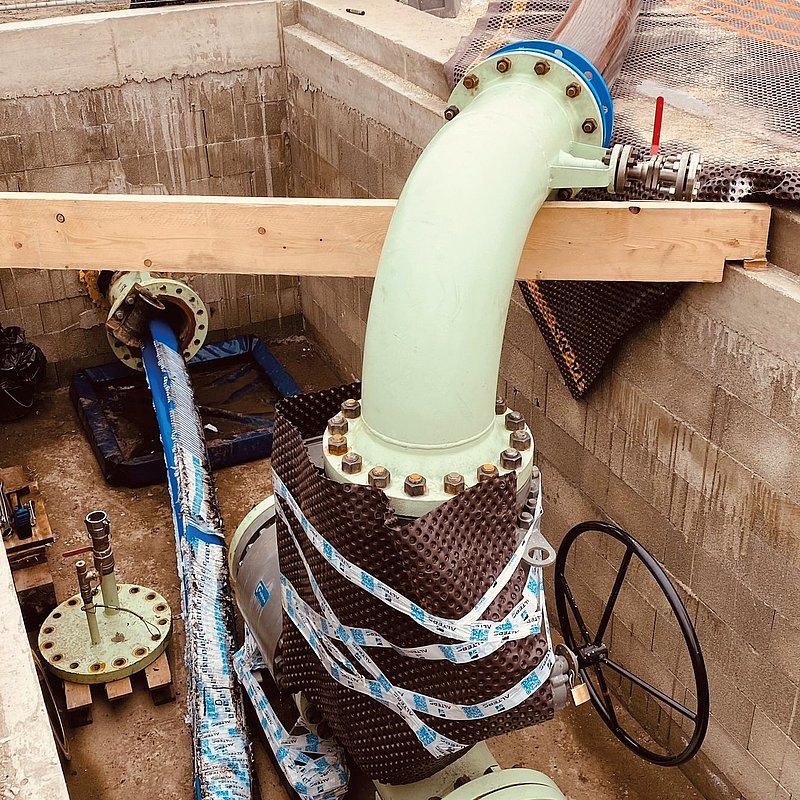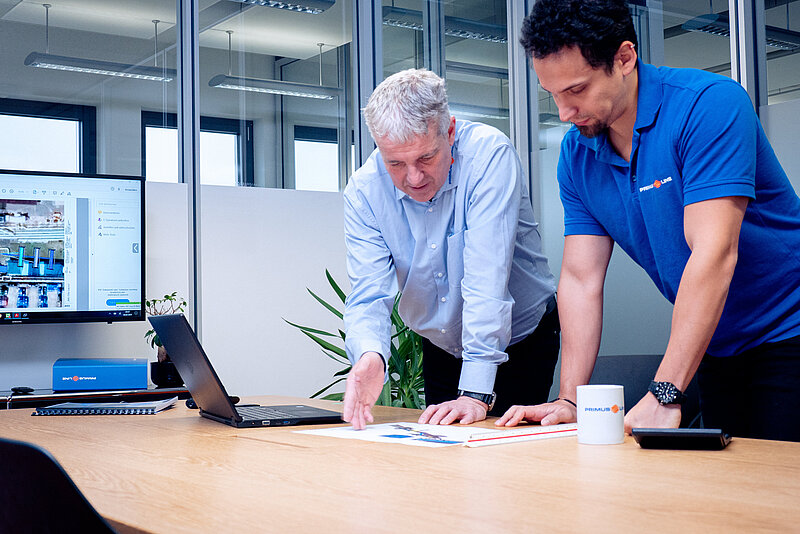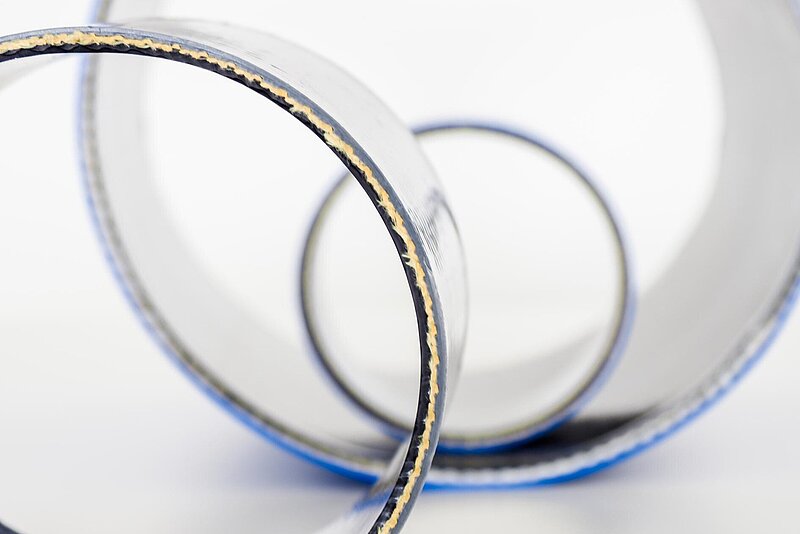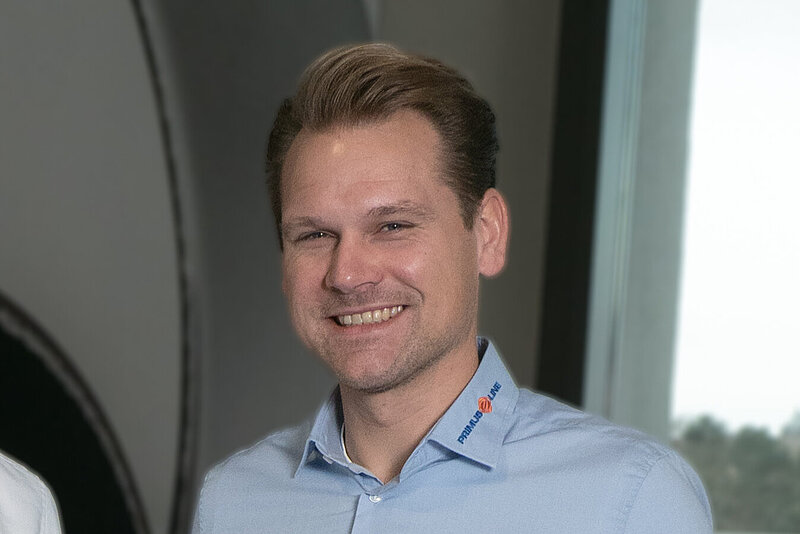KEM ONE, one of Europe’s largest vinyl producers, is rehabilitating an eight-kilometre section of a transport pipeline for brine with a total length of 92 kilometres between its saline in Vauvert and the production plant in Fos-sur-Mer in the south of France. From the brine, KEM ONE extracts raw materials to produce vinyl chloride monomer (VCM). In order to maintain the brine supply to the plant in Fos-sur-Mer and thus also production, the transport pipeline is being rehabilitated in eight sections of one kilometre each. To do so, a bypass is used for every rehabilitation section. A realisation period of one month is estimated for each section. The entire project, however, extends over 18 months, as there is a pause during the summer months due to the regional forest fire risk.
Double application of Primus Line®
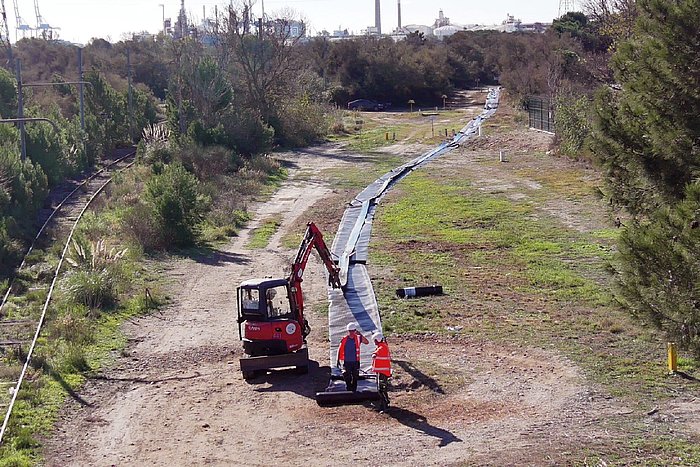
Why this solution?
The DN 300 steel transport line runs through the Natura 2000 protected area of the Camargue: safe transport and protection of the environment are top priorities. As the eight-kilometre-long pipeline had already suffered various damages over time, KEM ONE decided to rehabilitate it.
“We looked at different technical solutions: One of the first was to replace the pipe in its original position with a traditional steel pipeline,” explains Mathieu Bernardini, Pipelines Manager at KEM ONE. “Then we thought about a solution based on polyethylene (PE). And after some consideration, we chose the product from Rädlinger primus line GmbH.”
Both financial and organisational aspects were crucial for the decision: The combination of rehabilitation with a trenchless system and maintenance of operation via bypass is considerably more cost-effective than the new laying of the transport pipeline in conventional, open construction. Furthermore, the trenchless method substantially facilitated the authorisation process that every French operator has to pass for rehabilitation projects in the protected area. “It is extremely complicated to excavate trenches here. We are not only in a nature reserve, but also in the middle of a collection of pipelines from various regional utilities,” explains Jérôme Boissière, Managing Director of Altero Travaux Publics, installation partner of Rädlinger primus line GmbH in France. “These pipelines transport hazardous materials in some cases. The environmental aspect is omnipresent.“
Together with Primus Line experts and the engineering company Eureteq, a specialist in transport pipelines, Altero developed the idea of working trenchless and with bypasses. DREAL PACA, the regional directorate of the Ministère de la Transition Ecoologique (Ministry of Ecological Transition) and responsible for environment, planning and housing, validated the concept.
To prepare for installation, the assembly team mounted valves in corresponding chambers to obtain isolated sections of the same length. To rehabilitate a section, the Altero installation team brings the 1,000-metre bypass there, rolls it out on a protective membrane as required by DREAL PACA, connects it and puts it into service. Once this is done, the team removes the sleeves in the valve chambers and then pulls the Primus Liner DN 300 PN 25 into the steel pipe of the corresponding section for rehabilitation. The installation team then cleans the temporary bypass and rolls it back up so that it can be used in the next section. This process is repeated a total of eight times. The Primus Line® Overland Piping system serves as the bypass, in this case a flexible pipe DN 300 with a designed operating pressure of up to 16 bar, a length of around 1,000 metres and the corresponding connectors. Each bypass is laid along the existing pipeline and service road.
What are the advantages of the bypass solution?
The Primus Line® Overland Piping system has been specially developed for the temporary above-ground transport of demanding and potentially hazardous media, such as waste water, seawater, heavy oil or oil-water mixtures.
“The system is safe, efficient, environmentally friendly and saves costs by being ready to use quickly,” promises Philippe Ferrer, Primus Line Director in France. “And above all, it is reusable.“
The safety comes from the three-layer structure of the flexible high-pressure pipeline. Inner as well as outer layers are made of thermoplastic polyurethane (TPU), reinforced by a core of seamless woven aramid. “This resistance allows the product to be installed and operated in outdoor temperatures ranging from -20 °C to 60 °C,” Ferrer elaborates. “During installation, assembly teams do not have to weld or handle hazardous materials.” In addition, the entire manufacturing process of the flexible pipeline is fully monitored, and it also undergoes a pressure test at the factory before being delivered to the construction site.
As with all Primus Line products, installation lengths of 1,000 metres and more in one piece as well as multiple changes of direction are possible. The long lengths considerably reduce the number of joints and thus potential weak points. Since the product is very flexible due to its core of aramid fabric, it adapts to the unevenness of the terrain. Primus Line® Overland Piping handles large flow rates of up to 500 litres per second and the installation team lays the flexible pipeline directly from the reel using a winch or mini-excavator. The connectors are installed on site with hand-held tools.
Primus Line® Overland Piping is more expensive to purchase than HDPE pipes, for example, but the system exceeds the break-even point after only a few applications. Depending on the diameter, up to 4,500 metres of flexible pipeline are delivered to the site on one reel. In combination with its low weight, this saves storage and transport costs.
The installation of Primus Line® Overland Piping requires only few equipment which leads to an important reduction of the CO2 footprint on site. There is no impact on sensitive and protected areas such as nature parks or the course of a river by installing the Primus Line® Overland Piping system – an environmentally friendly solution, as with KEM ONE in the Camargue: “If we transported the entire brine by trucks, this would amount to more than 200 tank wagons per day”, explains Bernardini.
What is the conclusion of the operator KEM ONE?
“We are the first in France to use Primus Line® Overland Piping and then in combination with a rehabilitation with Primus Line®,” Bernardini states. “The rehabilitation of an eight-kilometre pipeline without, or at least with very little, construction work is indeed something new.”
KEM ONE already had rehabilitated a shorter pipeline section of 500 metres with Primus Line® in 2019. In this project, the bendability of the Primus Line® technology was particularly convincing, as there were four 45° bends on the complicated section. Another 600 metres with 45° bends under a canal followed in 2022 during a ten-day production stop. “Historically, we pipeline builders have been more partial to steel. But that is the past,” Bernardini sums up.
„We have to move with the times and not close ourselves off to recent technologies. We try to be innovative – and we have to be with the current challenges.“
Mathieu Bernardini, Pipelines Manager at KEM ONE
Excellent quality for highest demands
Despite the continuous quality control in the factory, Primus Line® Overland Piping has also undergone the following tests – partially under external supervision:
Documented factory acceptance test (burst pressure test):
In this project with KEM ONE, the pressure design was made for a service life of 20 years. The flexible pipe installed in this project achieved a burst pressure far above the minimum requirement of 64 bar in the batch test.
Compressive resistance:
A successful test with 500 unwind/wind cycles showed no effect on the short-term burst pressure.
